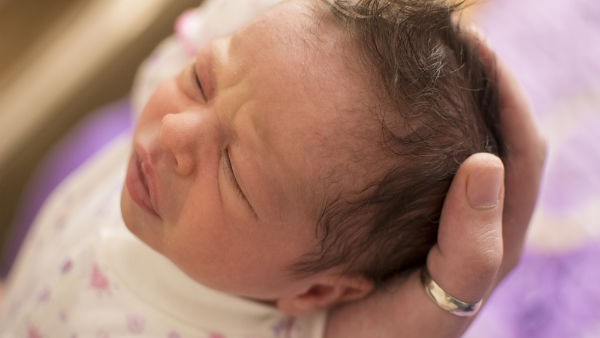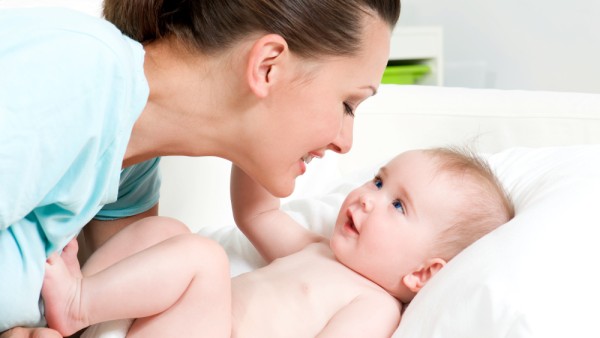Just In
- 7 hrs ago

- 15 hrs ago

- 17 hrs ago

- 18 hrs ago

Don't Miss
- Finance
 Biggest Ever Stock Splits, 49 New Shares On Existing 1 Share; FMCG Makes Big Announcement Before Splitting
Biggest Ever Stock Splits, 49 New Shares On Existing 1 Share; FMCG Makes Big Announcement Before Splitting - Sports
 Pakistan vs New Zealand 4th T20I Match Preview, Key Players, Injury Update, Squad, Other Details
Pakistan vs New Zealand 4th T20I Match Preview, Key Players, Injury Update, Squad, Other Details - Education
 JEE Main Result 2024 Out, Telangana's 15 Toppers Shine, Check Statewise List of 56 Candidates with Perfect 100
JEE Main Result 2024 Out, Telangana's 15 Toppers Shine, Check Statewise List of 56 Candidates with Perfect 100 - News
 Mangalsutra Row: Did Indira Gandhi Donate Gold During The 1962 War? The Facts Behind Priyanka's Claim
Mangalsutra Row: Did Indira Gandhi Donate Gold During The 1962 War? The Facts Behind Priyanka's Claim - Movies
 Kota Factory 3 OTT Release Date, Platform: When Will Jitendra Kumar's Web Series Premiere On Netflix?
Kota Factory 3 OTT Release Date, Platform: When Will Jitendra Kumar's Web Series Premiere On Netflix? - Travel
 Escape to Kalimpong, Gangtok, and Darjeeling with IRCTC's Tour Package; Check Itinerary
Escape to Kalimpong, Gangtok, and Darjeeling with IRCTC's Tour Package; Check Itinerary - Technology
 OPPO Find X7 Ultra Camera Deep-Dive: Pushing the Boundaries of Photography on a Smartphone
OPPO Find X7 Ultra Camera Deep-Dive: Pushing the Boundaries of Photography on a Smartphone - Automobiles
 Aston Martin Vantage Launched In India At Rs 3.99 Crore
Aston Martin Vantage Launched In India At Rs 3.99 Crore
10 Weird Yet Normal Things About Newborns That You Should Know
Mothers, especially first-time ones, may face many day-to-day challenges in understanding their babies well, precisely due to the behavioural changes that take place in newborns. These changes are considered as part of their growth and development and are often not a point of concern.

Though certain changes in newborns are pretty normal, they tend to make their mothers anxious and worried. Here, we have discussed a few weird but normal things about newborns. These facts may help save new mothers from unnecessarily worrying and will allow them to enjoy the transition phase of their babies.

1. The First Poop
The weird thing about the first poop of a baby is that it is black and sticky. Scientifically, a baby's first poop is known as meconium; it is basically the remains of the food substances absorbed by the infant when it was a foetus. Meconium can be green, yellow or brown and can be liquid, sticky or solid. Medical attention is needed when the poop is white or chalky and the baby poops twice or thrice. [1]
2. Baby Pimples
According to a study, neonatal acne, commonly known as baby pimples, is common in around 20 per cent of newborns under six weeks. The acne is not true but an inflammatory reaction to the saprophytic yeast Malassezia, which is a part of the normal skin flora. The acne tends to disappear within four or less months and rarely requires treatment. Also, it is more prevalent in boys compared to girls. [2]
3. Crossed Eye
The eyes of newborns often appear to be crossed during the first few months, and that is perfectly normal. The misalignment of the eyes is mainly because of the adjustment to the sense of light and the underdeveloped eye muscles. As babies grow, their eyes adjust to the light and their eye muscles gain strength. They also learn focus techniques that ultimately correct their crossed eyes or strabismus.

4. Cradle cap
Cradle cap, scientifically known as pityriasis capitis, is characterised by oily or crusty scaly patches on the scalp of babies. It can be thick yellow or white scales and isn't itchy or painful. Studies say that cradle cap is a common and self-limiting neonatal condition that is usually present during the first two months after birth and disappears easily with a simple hair wash with mild shampoo and a soft-bristled brush. [3]

5. Flaky Skin
Similar to cradle cap, babies flaky or peeling skin is a normal part of their development and may not require any medicinal treatment. The bodies of newborns are coated with vernix, a naturally produced waxy white substance. When the vernix is cleaned by nurses after their birth, the skin gets prone to dryness and starts losing moisture at a faster rate compared to adults. This leads to skin peeling or flaking off in babies. [4]
6. Baby Hiccups
Hiccups are healthy development signs in babies. According to a study, newborns spend around 2.5 per cent of their time hiccupping. Like in adults, hiccups in babies are a reflex of the diaphragm, especially when they are feeding. Though hiccups are not a point of concern and may go away in five or 10 minutes, consult a medical expert if they do not stop sooner and recur more often. [5]
7. Soft Spots
Fontanelle, also known as the "soft spots," are unique characteristics in newborns identified by soft membranous gaps in their skull areas. According to a study, there are around six fontanelles present in children during infancy. They allow easy passage of the head during delivery and to accommodate the fast-growing cranium bones of the brain. [6]

8. Baby Boobs
Newborns are often noticed with swollen breasts or lumps under the nipples, giving them the name "baby boobs". The noticeably enlarged breasts in babies are mainly due to their exposure to maternal hormones in the womb. With time, the breast size starts to decrease and they become flat or shrink. The lumps can be noticed up to a week after the birth or may continue for a month or two.
9. Odd Reflexes
Newborns are often seen with sudden jerky movements for no reason at all. It is mainly due to the development of natural reflexes and new body movements. Scientifically, these jerks are known as Moro reflexes and are involuntary and protective reflex responses by the body against sudden loss of support. These odd reflexes are usually present in full-term babies and tend to go away by 12 weeks. [7]
How To Prepare Healthy And Crispy Homemade Vegetable Patties
10. Bow Legs
Genu varum or bow legs in newborns are present for around six months to a year. As the infant begins to stand or walk, the lower limbs straighten and assist them in proper movement.
-
 babyWhy Do Newborns Smile In Their Sleep?
babyWhy Do Newborns Smile In Their Sleep? -
 kidsHow To Manage Vaccination-Related Pain In Newborns And Children?
kidsHow To Manage Vaccination-Related Pain In Newborns And Children? -
 postnatalCan Diabetes Affect Breastfeeding? Benefits Of Breastfeeding In Both Newborns And Diabetic Mothers
postnatalCan Diabetes Affect Breastfeeding? Benefits Of Breastfeeding In Both Newborns And Diabetic Mothers -
 postnatalBilateral Inguinal Hernia In Newborns: Causes, Symptoms, Risk Factors And Treatments
postnatalBilateral Inguinal Hernia In Newborns: Causes, Symptoms, Risk Factors And Treatments -
 prenatal15 Choline-Rich Foods For Pregnant Women
prenatal15 Choline-Rich Foods For Pregnant Women -
 prenatal12 Protein-Rich Foods For Pregnant Women
prenatal12 Protein-Rich Foods For Pregnant Women -
 prenatal8 Health Benefits Of Folic Acid During Pregnancy
prenatal8 Health Benefits Of Folic Acid During Pregnancy -
 prenatalWhat Are Pregnancy Dreams? Types, Causes And Tips To Avoid
prenatalWhat Are Pregnancy Dreams? Types, Causes And Tips To Avoid -
 prenatalWhy Interest In Home Birth Is Rising During The COVID-19 Pandemic
prenatalWhy Interest In Home Birth Is Rising During The COVID-19 Pandemic -
 babyWhy Is My Newborn Not Urinating?
babyWhy Is My Newborn Not Urinating? -
 pregnancy parentingMyths vs Facts: Do Babies Poop In The Womb?
pregnancy parentingMyths vs Facts: Do Babies Poop In The Womb? -
 healthMyths vs Facts: Everyone Should Have At Least One Bowel Movement Per Day
healthMyths vs Facts: Everyone Should Have At Least One Bowel Movement Per Day


 Click it and Unblock the Notifications
Click it and Unblock the Notifications



